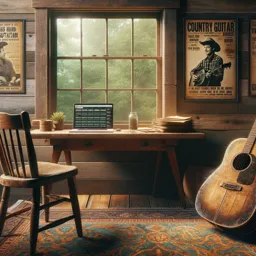The blues guitar is renowned for its emotive power and expressive nuances. Beyond basic chords and scales, what truly sets blues apart are the subtle yet impactful techniques that make every note speak. This article dives deep into three foundation techniques—bends, slides, and vibrato—essential tools for every blues guitarist aiming to evoke feeling and authenticity in their playing.
Bends: Adding Soul to Your Notes
Bending a string involves pushing or pulling it to raise the pitch, often mimicking the sound of the human voice. In blues, bends are used to express yearning, tension, or release. Start by practicing half-step and whole-step bends, paying close attention to pitch accuracy. Combine bends with vibrato for even greater emotional impact.
- Tip: Use your supporting fingers for added strength and control, especially on heavier gauge strings.
- Listening exercise: Try to identify signature bends in classic solos by legends like B.B. King and Stevie Ray Vaughan.
Slides: Connecting Notes Smoothly
Slides create smooth transitions between notes, emulating the vocal qualities at the heart of blues music. To execute a slide, pick a note and smoothly move your fretting finger to another fret without lifting off the string. Slides are effective both as embellishments and central parts of licks and riffs.
- Use slides to connect chord tones in a solo for a fluid, seamless sound.
- Practice ascending and descending slides in different positions to add variety to your phrasing.
Vibrato: Breathing Life Into Notes
Vibrato is the small, rapid fluctuation in pitch that gives sustained notes a singing quality. In blues guitar, expressive vibrato can turn a simple note into an unforgettable statement. Technique varies from player to player—some use a subtle, slow vibrato while others prefer a wider, faster approach.
- Experiment: Try finger or wrist vibrato to see which feels more natural for you.
- Pro tip: Start slow and increase speed only when you can consistently control the sound and pitch range.
Putting It All Together
To master blues guitar, practice integrating bends, slides, and vibrato into your scales, licks, and improvisations. Listen closely to blues recordings and mimic their phrasing and touch. Recording your practice sessions can help you evaluate and refine your technique over time.
Remember, while technical accuracy is important, the true essence of blues guitar lies in conveying emotion. Let your heart guide your fingers, and let each note tell a story.


























